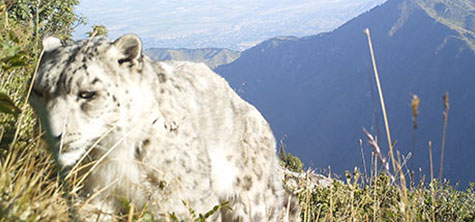Kazakhstan’s vulnerable iconic snow leopards have been put under the spotlight in key research by University of Cumbria academics.
The country’s national symbol, Panthera uncia has been investigated in an assessment of the big cats, alongside their prey populations using environmental data and computer modelling techniques.
Based on a corridor area between Kazakhstan’s southern and eastern borders, the study concentrated on Almaty, where the normally elusive snow leopards venture nearer to inhabited areas.
Department of Science, Natural Resources and Outdoor Studies research and teaching associate, Dr Claire Holt, said the species had declined because of habitat loss and human persecution.
Under increasing pressure from farmers for plundering their livestock, it was vital to evaluate the availability and distribution of their natural prey animals, explained Dr Holt.
She added: “We looked at both predator and four main prey species to highlight sensitive areas of overlap for future protection. The environmental space for both is similar.
“These areas and species need protection. Predators will follow prey to different altitudes so it isn’t just snow leopards that need help. To conserve a predator, we also need to evaluate whether they have enough prey. ”
University of Cumbria’s Professor Ian Convery and Professor Owen Nevin, from University of Central Queensland, have been studying snow leopards in Almaty Nature Reserve for some time, linking with Al-Farabi Kazakh National University.
“However, because there was limited data on populations, this was an ideal opportunity to provide research that will be useful for conservation efforts on the ground,” said Dr Holt.







